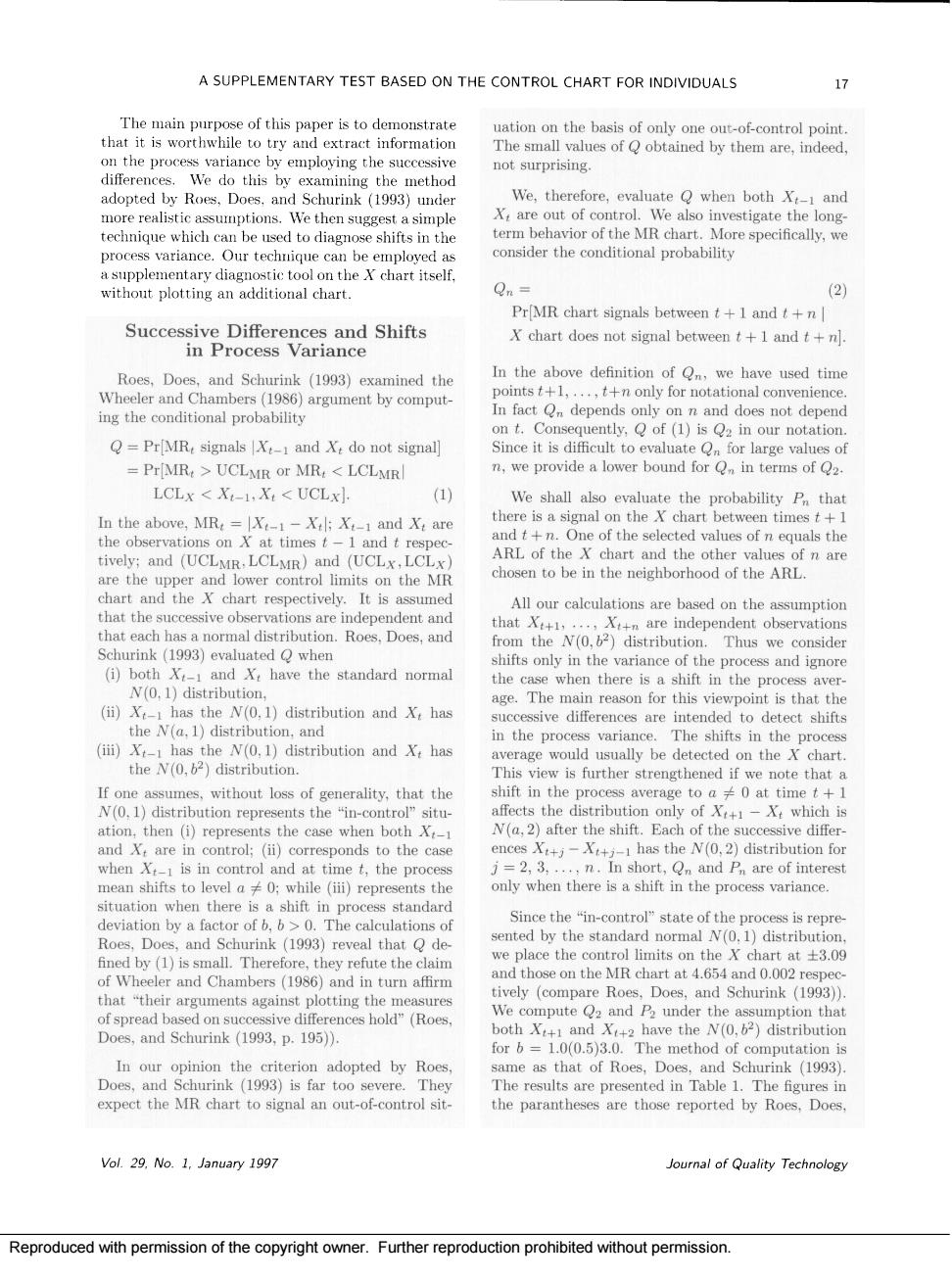正在加载图片...

A SUPPLEMENTARY TEST BASED ON THE CONTROL CHART FOR INDIVIDUALS 公 uation on the basis of only one out-of-control point e small vales of Qobtained by them are,indeed. not surprising. We.therefore.evaluate o when both x more realistic assut ptions Wethe 1993)und X,are out of contro We also i nvestigate the long. technique which can be used to diagnose shifts in the without plotting an additional chart. Pr[MR chart signals betweent+1 and+n Success and shifts in Process Variance X chart does not signal between t+1 and t+n. In the above definition of Q we have used time ing the conditional probability uently,of (1)is in our notation. Q=PrMR,signals and X,do not signall =Pr MR:>UCLMR or MR:<LCLMR LCLX<UCLXI. (1) We shall alsc evaluate the probability p tha andX.are there is a sigal nh chart between times+】 and (UCL ARL.of the chart and the other values of n ar chosen to be in the neighborhood of the ARL Schurink (1993)evaluated Qwhen h( Thus we consider e&oheaae and ignor ha the N(o.D distribution and has age.The main reason for this v n the e differenc the v(.2 dis listribution and X,has would usually be detected on the chart -X:which is resents the case when both v(a,2)aite the shif is in control and at time t.the proces 2 n.In short,and B are of interest mean shifts to level≠ while (iii)represents th only when there is a shift in the process variance. deviation by ctor f The cac 14 Roes,Doe and ()reveal that de of Wheeer and Chambers (96)and in turn afirm and Schurink (1993) that "their arguments against 4 for6=100.53 The method of comnutation i In our opinion hat of Roes, expect the MR chart to signal an out-of-control sit the parantheses are thos Vol.29.No.1.January 1997 Journal of Quality Technology Reproduced with permission of the copyright owner.Further reproduction prohibited without permission.Reproduced with permission of the copyright owner. Further reproduction prohibited without permission